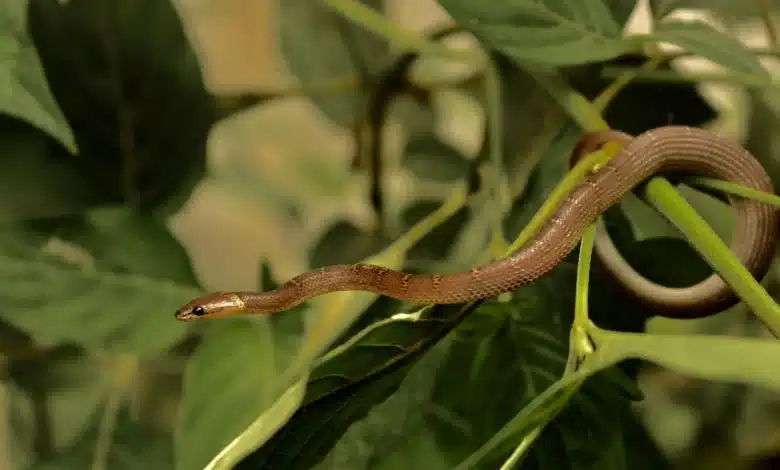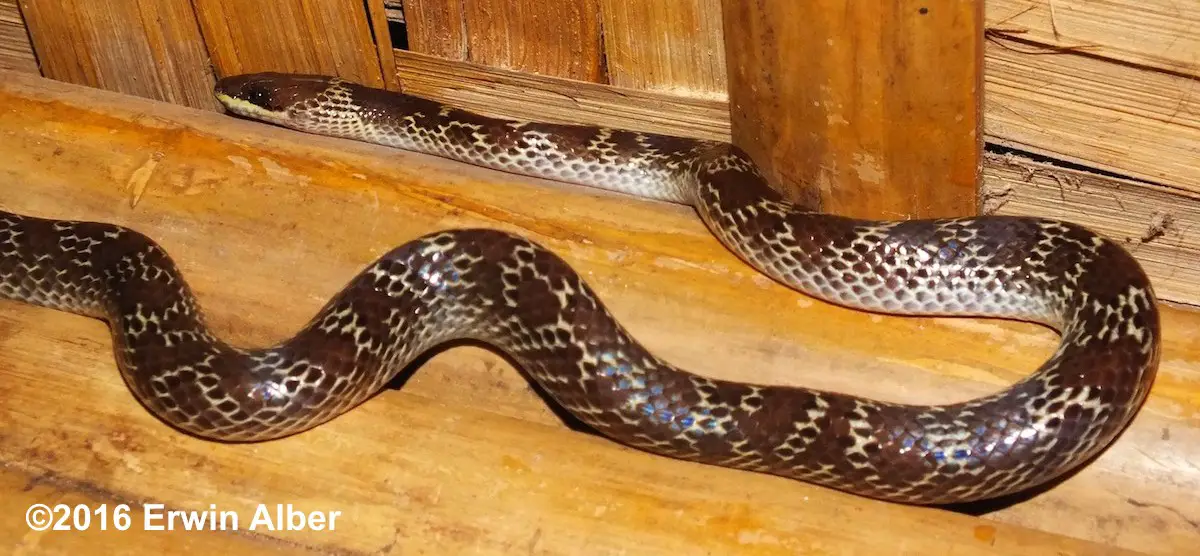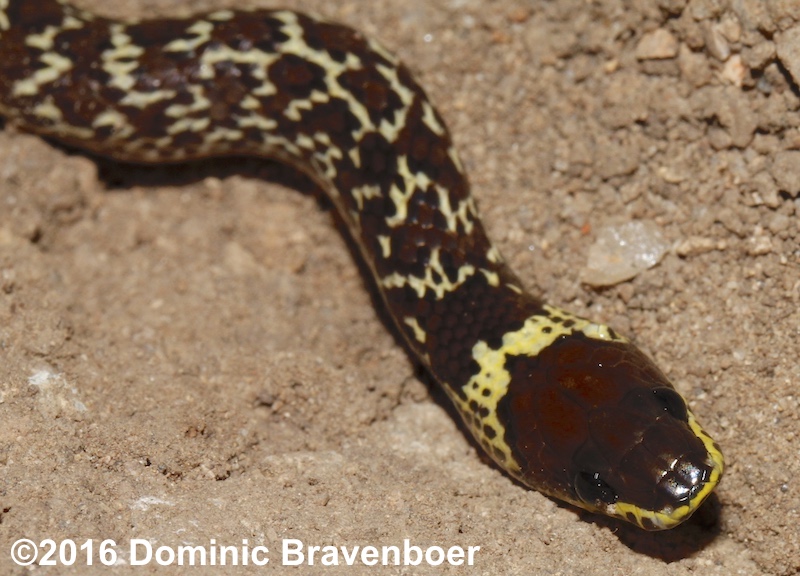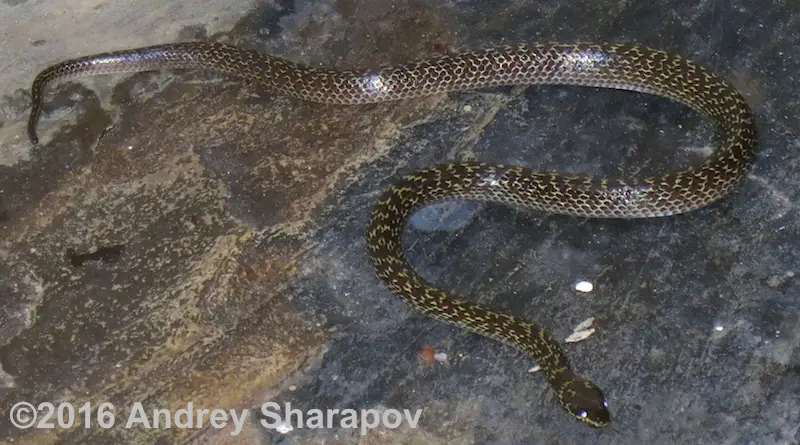Common Wolf Snake | Lycodon Capucinus | Harmless


Lycodon capucinus or – Common Wolf Snake (Indian Wolf Snake) – งูหมาป่า
Appearance: A small and thin snake with a head readily distinct from the neck. Average size for this snake is around 40 cm. There is a white band across the top of the neck in juveniles which is lost later in adulthood.
These snakes have an odd pattern on the dorsal (top) side which is quite easily distinguished once you’ve seen them a number of times. There is no other snake in Thailand with a similar pattern.
Sometimes this pattern is white, and sometimes yellowish. The body is generally brown, the shade doesn’t vary much.
These snakes have a very reflective shine that doesn’t make for great photos with flash!
Length: We found L. capucinus averaging around 40 cm. in length. This snake can reach 80 cm. Max diameter at the thickest part of the body – around 2 cm.
Range: This small snake is found across Thailand and is one of the most common snakes we are asked to identify – receiving multiple requests each month for the last half-dozen years.
Other countries with the Common Wolf Snake (Indian Wolf Snake): Brunei Darussalam; Cambodia; China; India (Andaman Is., Nicobar Is.); Indonesia; Lao People’s Democratic Republic; Malaysia; Singapore; Vietnam.

Habitat: Found on concrete walkways and porches, on limestone rock on hills, this snake seems to prefer crawling across rocks. We have found them at some elevation (200 m), but primarily at and around seal level. Comfortable in disturbed habitat. Also known to be semi-arboreal.
Active Time: The Common Wolf Snake is nocturnal.
Defensive Behavior: These snakes are a mixed bag. Some are immediately defensive and striking, while others are able to be handheld without attempting to bite at all. These snakes strike almost randomly in the air – not really to make contact, but as a threat display so they don’t need to bite.
Like some other snakes in Thailand, the common wolf snake will shake its tail very fast as a threat display. When in leaves, this can make a slight sound. We’ve also seen them do it on concrete and rocks without any leaves close by.
Food: Prey includes small animals like frogs, skinks, and possibly insects.
Danger: None.
Offspring: Nothing known.

Notes: There is little information about this snake online despite exhaustive searches. This is a very common snake in Southeast Asia. I have found them dozens of times.
Scientific classification
Kingdom: Animalia
Phylum: Chordata
Class: Reptilia
Order: Squamata
Suborder: Serpentes
Family: Colubridae
Genus: Lycodon
Species: L. capucinus
Binomial name: Lycodon capucinus
Classified by Boie in 1827.
